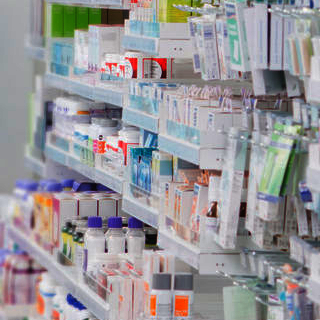What do you need to know?
You’re at the pharmacy because you aren’t feeling well and need medicine. There are aisles and aisles of medicine, but how do you know which one you should get in order to feel better? Depending on your symptoms, you might need a couple of medicines from a wide variety available. How do you select the best one?
 Definition
Definition
When you go to the doctor and get a prescription for medication, you have to take it to the pharmacy to get the medicine in order to be able to use it. Sometimes, you aren’t feeling well, such as upset stomach, runny nose or backache, and want something to alleviate the symptoms without having to go to the doctor. There is a solution…non-prescription, or over-the-counter (OTC) medications that are available at pharmacies and most grocery stores. OTC medicines are safe and effective as long as you follow the directions on the label. There are many different kinds to treat a wide range of illnesses. There are pain relievers, anti-gas, anti-diarrhea, fever reducers, allergy, decongestants, cough and migraine medications to name just a few of the categories that can be treated with OTC medicines. For a complete list of symptoms and medications that treat them, please refer to Fast Facts (click the image).
Considerations
When using OTC medicines, there are several things to consider. The most important thing that you can do is read the label. It will list the active ingredients, uses, warnings, purpose, directions, inactive ingredients and other information about the medicine. It will also have the expiration date, lot/batch code, net quantity of contents, and what to do if an overdose occurs. All of this is vital information to have read and understand prior to taking any medication. Before you use any medication, think of SAFER (Speak up, Ask questions, Find the facts, Evaluate your choices, Read the label). This will ensure that you take the medication properly to provide you with the most benefit and least chance of being harmed. One of the key reasons to read the label and follow SAFER is due to the fact that some medicines have the same active ingredients and if you take these medicines together without knowing this, you can accidently take too much of this ingredient and it could be harmful (some cough/cold medicines have pain/fever reducer ingredients in them and if you take a separate pain/fever reducer that has the same active ingredients, you could have an accidental overdose). Always take a medicine as directed on the bottle or as explained by a health care professional. Remember, more does not necessarily mean better. Another thing to consider is if you are taking prescription medications, you should talk to your doctor before taking any OTC medicine as they can interact with each other. Some essential things to avoid while taking OTC are:
1. Alcohol if you are taking antihistamines, products with dextromethorphan (some cough medicines), or any medication that can cause sleepiness.
2. OTC medications that treat sleeplessness if you are taking prescription sedatives or tranquilizers.
3. Laxatives when you have stomach pain, nausea or vomiting.
4. If you are taking prescription medication, do not take aspirin or nasal decongestants without checking with your doctor.
5. If you are pregnant or breastfeeding, check with your doctor prior to taking any OTC medications.
As far as storing OTC medication, there are several things to consider. It is important to store your OTC medications in a cool, dry place or as directed by the label. Always throw away any medications that are past the expiration date. It is a good idea to go through your medicine cabinet once a year to check for expired medications. By making sure that all medications are kept in their original containers, you will ensure no one accidently takes the wrong medicine.
Special Considerations – Children
There are OTC medicines that are available specifically for children and it is extremely important to give them only these medicines. Children are not small adults and should not be given any medications that are made for adults (even if it is the same medicine, but a lesser amount). Every time that you give a child a medicine, always read the label and follow the directions. Be sure to give the correct dose at the right time by knowing how much medicine you have to give (it is usually based off the child’s weight) and when as explained by the label or health care professional. Be aware of the difference between abbreviations, such as TBSP for tablespoon and TSP for teaspoon. It is also important to know the difference between milligram (mg), milliliter (mL) and ounce (oz). If the label calls for one type of measurement, use that measurement (make sure to keep any measuring device that comes with a medication so you can always give the proper dose). Consult with a health care professional before giving two medicines at the same time. It is also important to keep the safety caps locked on and medications out of reach of children. All of these might seem a tad over the top, but even a small miscalculation can make all the difference in children as far as a safe dose and overdose.
Over-the-counter medications are extremely beneficial and now you have the tools to be able to evaluate which medicine you need and will start feeling better in no time. If you have any questions, please talk to your doctor or pharmacist. For more information about OTC medicines, please visit Food and Drug Administration (FDA) page about them at https://www.fda.gov/drugs/resourcesforyou/consumers/buyingusingmedicinesafely/understandingover-the-countermedicines/ucm277845.htm